An Economic Analysis of the Shading Effects of Transmission Lines on Photovoltaic Power Plant Investment Decisions: A Case Study
Abstract
:1. Introduction
1.1. The Spread of PV Systems around the World and Various Aspects of Their Designs
1.2. The Characteristics of Conventional Crytalline and Maxim Integrated (MX) PV Technologies Related to Shading
1.3. Practical Features of Hungarian PV Power Plant Investments and Their Relationships with the Study Area
2. Materials and Methods
2.1. High-Voltage Transmission Lines in Hungary and the Various Aspects of Shading
2.2. The Hungarian Regulatory Environment Related to PV Power Plants—An Overview
2.3. The Characteristics of the Simulation Procedure Used in the Model, Validation, and the Description of the Aspects of Modeling
- Create relief-specific models for the given location;
- Accurately see the objects posing shading problems with the help of satellite images imported from Google Earth, and reconstruct them as 3D objects with great precision;
- Change the shading effects of the problematic objects created as 3D objects as a function of time in an interactive way, which helps identify areas not suitable/problematic for the placement of PV modules;
- Determine the useful area of the potential construction site.
- Selected site without shading problems affecting potential use for PV power plant (ideal location, scenario A);
- Selected location with transmission towers and their conductors traversing the site in an east–west direction, cutting the area into two halves down the middle (one of the worst conditions for a location, scenario B);
- Selected location with transmission towers and their conductors traversing the site in a north–south direction, cutting the area into two halves down the middle (one of the worst conditions for a location, scenario C).
- Due to their shading effects, high-voltage transmission towers and their conductors affect the layout characteristics of PV power plants and their performance.
- When the shading effects of high-voltage transmission towers and their conductors are taken into consideration in designing a PV power plant, and when MX PV modules are also installed in the shaded area, a difference can be observed in the specific energy generation and the performance of the PV power plant.
- When the shading effects of high-voltage transmission towers and their conductors are taken into consideration in designing a PV power plant, and when MX PV modules are also installed in the shaded area, a difference can be observed in the payback time of the PV power plant investment.
- Both the performance of PV power plants and the payback time of investments are influenced by the direction (east–west or north–south) in which the high-voltage transmission towers and their conductors traverse the area.
2.4. Methods and Details of the Economic and Technical Assessment
3. Results
3.1. The Most Common High-Voltage Transmission Tower Types in Hungary
- Fenyő: frequency: 22.28%, height: 46 m, outer diameter of conductor: 31.05 mm;
- Ipoly: frequency: 9.56%, height: 35.5 m, outer diameter of conductor: 31.05 mm;
- Kaposvár: frequency: 9.01%, height: 33 m, outer diameter of conductor: 31.05 mm.
3.2. The Shading Characteristics of Hungarian High-Voltage Transmission Towers and Their Conductors
3.3. The Validation Results of the Simulation Procedure Used in the Modeling
3.4. The Identification of the Unshaded and Shaded Zones Belonging to Each Scenario of the Examined Area
3.5. The Size of the PV Power Plants That Can Be Built According to the Examined Scenarios and Their Energy Production in the First Year
- The number of the PV modules that can be placed in the unshaded and shaded zones according to the given scenario;
- The nominal power of the PV modules that can be placed in the unshaded and shaded zones according to the given scenario;
- The annual shading losses of the PV modules;
- The amount of electric energy that can be sold yearly from the unshaded and shaded zones in the case of a 1 kWp PV system;
- The amount of electric energy produced by the PV modules mounted in the unshaded zones, the shaded zones, and the whole site that can be sold in the first year.
3.6. The Economic Aspects of the Examined PV System Scenarios
4. Discussion
5. Conclusions
Author Contributions
Funding
Institutional Review Board Statement
Informed Consent Statement
Data Availability Statement
Acknowledgments
Conflicts of Interest
Abbreviations
| C0 | Total initial investment costs (EUR) |
| CFtotal | Total cash flow (not discounted) (EUR) |
| CO&M,total | Total operation and maintenance costs for the duration of the investment (EUR) |
| Ct | Discounted (net) cash inflow for the duration of investment (EUR) |
| CV | Relative standard deviation (%) |
| DC | Direct current (A) |
| DPP | Discounted payback period (years) |
| E | Annual PV energy output (kWh) |
| E1 | Annual PV energy output in first year (kWh) |
| Et | Annual PV energy output in other years (kWh) |
| Etotal | Total PV energy output for the duration of the investment (kWh) |
| IRR | Internal rate of return (%) |
| NPV | Net present value (EUR) |
| IC | Integrated circuit |
| KÁT | Hungarian system of supporting green energy from renewable energy sources until 31 December 2016 |
| MAVIR | Hungarian Transmission System Operator |
| MEKH | Hungarian Energy and Public Utility Regulatory Authority |
| METÁR | Renewable Energy Support Scheme from 1 January 2017 |
| MX | Maxim Integrated |
| PV | Photovoltaic |
References
- Renewable Energy Policy Network for the 21st Century. Renewables 2020 Global Status Report-REN21; REN21 Secretariat: Paris, France, 2020. [Google Scholar]
- SolarPower Europe. Global Market. Outlook for Solar Power; SolarPower Europe: Brussels, Belgium, 2019. [Google Scholar]
- Zsiborács, H.; Csányi, S.; Pócs, I.; Hegedűsné Baranyai, N.; Kis-Simon, T.; Pintér, G. Aspects of energy storage in Hungary based on transmission system operator data. Energiagazdálkodás 2020, 2, 56–60. [Google Scholar]
- Vokas, G.A.; Zoridis, G.C.; Lagogiannis, K.V. Single and Dual Axis PV Energy Production Over Greece: Comparison Between Measured and Predicted Data. Energy Procedia 2015, 74, 1490–1498. [Google Scholar] [CrossRef] [Green Version]
- Choi, Y. Solar Power System Planning and Design. Appl. Sci. 2020, 10, 367. [Google Scholar] [CrossRef] [Green Version]
- Cui, Y.; Zhu, J.; Meng, F.; Zoras, S.; McKechnie, J.; Chu, J. Energy assessment and economic sensitivity analysis of a grid-connected photovoltaic system. Renew. Energy 2020, 150, 101–115. [Google Scholar] [CrossRef]
- Breyer, C.; Schmid, J. Global Distribution of Optimal Tilt Angles for Fixed Tilted Pv Systems. In Proceedings of the 25th European Photovoltaic Solar Energy Conference and Exhibition/5th World Conference on Photovoltaic Energy Conversion, Valencia, Spain, 6–10 September 2010; pp. 4715–4721. [Google Scholar]
- Fraunhofer Institute for Solar Energy Systems. Photovoltaics Report; Fraunhofer Institute for Solar Energy Systems: Freiburg, Germany, 2020. [Google Scholar]
- SecondSol GmbH. New and Used Inverter Prices. Available online: https://www.secondsol.com/de/marktplatzfilter/?kat2=40939&kategorie=17&sortierung=preiswp&langval=128&level4available=true&modul_alter=366&counterval=&level3=41118 (accessed on 4 December 2020).
- BIO-NRG Kft. PV Investment Experiences in Hungary, Interview. Available online: https://bnrg.eu/hu/rolunk (accessed on 3 December 2020).
- Djordjevic, S.; Parlevliet, D.; Jennings, P. Detectable faults on recently installed solar modules in Western Australia. Renew. Energy 2014, 67, 215–221. [Google Scholar] [CrossRef] [Green Version]
- Deline, C.; Sekulic, B.; Stein, J.; Barkaszi, S.; Yang, J.; Kahn, S. Evaluation of Maxim module-Integrated electronics at the DOE Regional Test Centers. In Proceedings of the 2014 IEEE 40th Photovoltaic Specialist Conference, PVSC 2014, Denver, CO, USA, 8–13 June 2014; pp. 986–991. [Google Scholar]
- Wendlandt, S.; Drobisch, A.; Tomow, D.; Friedrichs, M.; Krauter, S.; Grunow, P. Operating principle of a shadowed c-Si solar cell in PV modules. In Proceedings of the Solar World Congress (SWC), Kassel, Germany, 28 August–2 September 2011. [Google Scholar]
- Chen, X.M.; Li, Y.; Zhao, B.Y.; Wang, R.Z. Are the optimum angles of photovoltaic systems so important? Renew. Sustain. Energy Rev. 2020, 124, 109791. [Google Scholar] [CrossRef]
- Gao, Q.; Zhang, Y.; Yu, Y.; Liu, Z. A direct current-voltage measurement method for smart photovoltaic modules with submodule level power optimizers. Sol. Energy 2018, 167, 52–60. [Google Scholar] [CrossRef]
- Valkealahti, S.; Lappalainen, K. Experimental Study of the Behaviour of the Global MPP of Partially Shaded PV Strings. In Proceedings of the 37th European Photovoltaic Solar Energy Conference and Exhibition, Lisbon, Portugal, 7–11 September 2020; pp. 1501–1505. [Google Scholar] [CrossRef]
- International Energy Agency. Review on Infrared and Electroluminescence Imaging for PV Field Applications; International Energy Agency: Paris, France, 2018. [Google Scholar]
- Mäki, A.; Valkealahti, S. Differentiation of multiple maximum power points of partially shaded photovoltaic power generators. Renew. Energy 2014, 71, 89–99. [Google Scholar] [CrossRef]
- Solórzano, J.; Egido, M.A. Hot-spot mitigation in PV arrays with distributed MPPT (DMPPT). Sol. Energy 2014, 101, 131–137. [Google Scholar] [CrossRef]
- Olalla, C.; Hasan, M.; Deline, C.; Maksimović, D. Mitigation of Hot-Spots in Photovoltaic Systems Using Distributed Power Electronics. Energies 2018, 11, 726. [Google Scholar] [CrossRef] [Green Version]
- Karatepe, E.; Boztepe, M.; Çolak, M. Development of a suitable model for characterizing photovoltaic arrays with shaded solar cells. Sol. Energy 2007, 81, 977–992. [Google Scholar] [CrossRef]
- Quaschning, V.; Hanitsch, R. Numerical simulation of current-voltage characteristics of photovoltaic systems with shaded solar cells. Sol. Energy 1996, 56, 513–520. [Google Scholar] [CrossRef]
- Kawamura, H.; Naka, K.; Yonekura, N.; Yamanaka, S.; Kawamura, H.; Ohno, H.; Naito, K. Simulation of I-V characteristics of a PV module with shaded PV cells. Sol. Energy Mater. Sol. Cells 2003, 75, 613–621. [Google Scholar] [CrossRef]
- Uchida, D.; Otani, K.; Kurokawa, K. Evaluation of effective shading factor by fitting a clear-day pattern obtained from hourly maximum irradiance data. Sol. Energy Mater. Sol. Cells 2001, 67, 519–528. [Google Scholar] [CrossRef]
- Vorster, F.J.; van Dyk, E.E. Current-voltage characteristics of high-concentration, photovoltaic arrays. Prog. Photovolt. Res. Appl. 2005, 13, 55–66. [Google Scholar] [CrossRef]
- Paraskevadaki, E.V.; Papathanassiou, S.A. Evaluation of MPP voltage and power of mc-Si PV modules in partial shading conditions. IEEE Trans. Energy Convers. 2011, 26, 923–932. [Google Scholar] [CrossRef]
- Mäki, A.; Valkealahti, S. Power losses in long string and parallel-connected short strings of series-connected silicon-based photovoltaic modules due to partial shading conditions. IEEE Trans. Energy Convers. 2012, 27, 173–183. [Google Scholar] [CrossRef]
- Mäki, A.; Valkealahti, S.; Leppäaho, J. Operation of series-connected silicon-based photovoltaic modules under partial shading conditions. Prog. Photovolt. Res. Appl. 2012, 20, 298–309. [Google Scholar] [CrossRef]
- Dolara, A.; Lazaroiu, G.C.; Ogliari, E. Efficiency analysis of PV power plants shaded by MV overhead lines. Int. J. Energy Environ. Eng. 2016, 7, 115–123. [Google Scholar] [CrossRef] [Green Version]
- Baka, M.; Manganiello, P.; Soudris, D.; Catthoor, F. A cost-benefit analysis for reconfigurable PV modules under shading. Sol. Energy 2019, 178, 69–78. [Google Scholar] [CrossRef]
- Maxim Integrated. Solar Cell Optimization: Cutting Costs and Driving Performance. 2020. Available online: https://www.maximintegrated.com/content/dam/files/design/technical-documents/white-papers/solar-cell-optimization1.pdf (accessed on 20 July 2021).
- Maxim Integrated. Maxim Submodule Optimizers PV Optimization for Utility Scale Solar. 2020. Available online: https://www.maximintegrated.com/content/dam/files/design/technical-documents/white-papers/submodule-optimizer-pv-optimization-for-utility-scale-solar.pdf (accessed on 20 July 2021).
- Maxim Integrated. Solar Cell Optimizer. Available online: https://www.maximintegrated.com/en/applications/industrial/power-energy/renewable-energy-solar/solar-cell-optimizers.html (accessed on 6 September 2020).
- Suntech Power Co., Ltd. Available online: https://www.suntech-power.com/products/hispec/#section-28cad02 (accessed on 20 July 2021).
- ZEROhomebills.com. Jinko Cheetah 315W Mono Solar Panel JKMS315M-60B. Available online: https://www.zerohomebills.com/product/jinko-cheetah-315w-mono-solar-panel-jkms315m-60b/ (accessed on 14 December 2020).
- ZEROhomebills.com. Jinko Maxim Integrated 320W Solar Panel JKMS320M-60HB-MX3. Available online: https://www.zerohomebills.com/product/jinko-cheetah-maxim-integrated-320w-solar-panel-jkms320m-60hb-mx3/ (accessed on 14 December 2020).
- PANNON Green Power Ltd. Interview on PV System Modeling Aspects, Design Processes and PV Scheduling Service. Available online: https://pannongreenpower.hu/en/home/ (accessed on 11 December 2020).
- Solar Generation Kft. Practical Experience with PV Shading-Interview. Available online: https://balatonsolar.hu/#kapcsolat (accessed on 12 December 2020).
- Hungarian Transmission System Operator-MAVIR ZRt. Development and Renovation Investments of the High-Voltage Electricity Network of MAVIR ZRt., 2010–2014. 2010. Available online: https://docplayer.hu/105729344-A-mavir-zrt-halozatfejleszt-esi-es-felujitasi-beruhazasai.html (accessed on 20 July 2021).
- Hungarian Transmission System Operator-MAVIR ZRt. The High-Voltage Electricity Network of MAVIR ZRt. 2013. Available online: https://www.mavir.hu/web/mavir/a-mavir-zrt-atviteli-halozati-alallomasai-es-tavvezetekei (accessed on 20 July 2021).
- Google LLC. Google Earth Pro. Available online: https://www.google.hu/intl/hu/earth/download/gep/agree.html (accessed on 15 December 2020).
- European Commission. Legal Sources on Renewable Energy. Available online: http://www.res-legal.eu/ (accessed on 3 December 2020).
- Hungarian Transmission System Operator-MAVIR ZRt. Renewable Support System, Renewable support Department Customer Service. Available online: https://www.mavir.hu/web/mavir/ugyfelszolgalat (accessed on 8 December 2020).
- Hungarian Transmission System Operator-MAVIR ZRt. Renewable Support System-Current Information. Available online: https://www.mavir.hu/web/mavir/aktualis-informaciok (accessed on 28 October 2020).
- Hungarian Energy and Public Utility Regulatory Authority. Renewable Energy Operating Aid. Available online: https://www.enhat.mekh.hu/mukodesi-tamogatas (accessed on 25 August 2020).
- Hungarian Independent Transmission Operator Company Ltd. (MAVIR ZRt). Information on the Changes in the KÁT and METÁR System in 2020. Available online: http://www.mekh.hu/tajekoztato-a-kat-es-a-metar-rendszer-2020-evi-valtozasairol (accessed on 15 December 2020).
- Hungarian Energy and Public Utility Regulatory Authority. Information on the Renewable Energy Support System (METÁR), Budapest, Hungary. 2020. Available online: http://www.mekh.hu/megujulo-tamogatasi-rendszer-metar (accessed on 20 July 2021).
- Hungarian Independent Transmission Operator Company Ltd. (MAVIR ZRt). Data publication, Current VER Data. Available online: https://www.mavir.hu/web/mavir/aktualis-ver-adatok (accessed on 1 August 2020).
- Hungarian Energy and Public Utility Regulatory Authority. Summary evaluation of the Evaluation Committee on the METÁR Tender Announced on 2 September 2019, Budapest, Hungary. 2020. Available online: http://www.mekh.hu/a-2019-es-metar-palyazat-eredmenyhirdetese (accessed on 20 July 2021).
- Hungarian Energy and Public Utility Regulatory Authority. Tender Documentation-2020-Support for Electricity Produced from Renewable Energy Sources within the Framework of a Tender Green Premium Scheme, Budapest, Hungary. 2020. Available online: http://www.archenerg.eu/files/connected_docs/article/hu-2020-as-metar-palyazat-49.pdf (accessed on 20 July 2021).
- Photovoltaic-Software.com. PV Softwares and Calculators. Available online: https://photovoltaic-software.com/pv-softwares-calculators/pro-photovoltaic-softwares-download (accessed on 8 December 2020).
- Tiszta Energiák Kft. Technical Details of Maxim PV Systems. Available online: http://smartnapelem.hu/maxim-napelemes-rendszerek-technikai-reszletei/ (accessed on 5 December 2020).
- Hungarian Chamber of Engineers. Guide to the Design of PV Power Generation Systems; Hungarian Chamber of Engineers: Budapest, Hungary, 2015. [Google Scholar]
- Trimble Inc. 3D Design Software, SketchUp. Available online: https://www.sketchup.com/ (accessed on 14 December 2020).
- Skelion. Sketchup, Skelion Solar Design Plugin, Renewable Energy. Available online: http://skelion.com/index.htm?v1.0.0 (accessed on 14 December 2020).
- European Commission. JRC Photovoltaic Geographical Information System (PVGIS). Available online: https://ec.europa.eu/jrc/en/pvgis (accessed on 14 December 2020).
- National Renewable Energy Laboratory. PVWatts Calculator. Available online: https://pvwatts.nrel.gov/ (accessed on 14 December 2020).
- Jordan, D.C.; Kurtz, S.R. Photovoltaic Degradation Rates-an Analytical Review. Prog. Photovolt. Res. Appl. 2013, 21, 12–29. [Google Scholar] [CrossRef] [Green Version]
- Belluardo, G.; Ingenhoven, P.; Sparber, W.; Wagner, J.; Weihs, P.; Moser, D. Novel method for the improvement in the evaluation of outdoor performance loss rate in different PV technologies and comparison with two other methods. Sol. Energy 2015, 117, 139–152. [Google Scholar] [CrossRef]
- Sánchez-Friera, P.; Piliougine, M.; Peláez, J.; Carretero, J.; De Cardona, M.S. Analysis of degradation mechanisms of crystalline silicon PV modules after 12 years of operation in Southern Europe. Prog. Photovolt. Res. Appl. 2011, 19, 658–666. [Google Scholar] [CrossRef]
- Bánhorváti Mayor’s Office. Appendix 6, Extract from Utilities Sectoral Standards. Available online: http://banhorvati.hu/ (accessed on 10 December 2020).
- CANADIAN SOLAR (USA) Inc. MAXPOWER CS6U-325|330|335|340P; CANADIAN SOLAR (USA) Inc.: Walnut Creek, CA, USA, 2017. [Google Scholar]
- Zsiborács, H.; Pályi, B.; Pintér, G.; Popp, J.; Balogh, P.; Gabnai, Z.; Pető, K.; Farkas, I.; Baranyai, N.H.; Bai, A. Technical-economic study of cooled crystalline solar modules. Sol. Energy 2016, 140. [Google Scholar] [CrossRef] [Green Version]
- Brealey, R.; Myers, S.; Allen, F. Principles of Corporate Finance, 13th ed.; McGraw-Hill Education: New York, NY, USA, 2019; ISBN 1260013901. [Google Scholar]
- Inflation.Eu Historic Inflation Hungary–Historic CPI Inflation Hungary. Available online: https://www.inflation.eu/en/inflation-rates/hungary/historic-inflation/cpi-inflation-hungary.aspx (accessed on 14 December 2020).
- Zsiborács, H.; Hegedűsné Baranyai, N.; Csányi, S.; Vincze, A.; Pintér, G. Economic Analysis of Grid-Connected PV System Regulations: A Hungarian Case Study. Electronics 2019, 8, 149. [Google Scholar] [CrossRef] [Green Version]
- Fusion Media Limited. Hungary 15-Year Bond Yield. Available online: https://www.investing.com/rates-bonds/hungary-15-year-bond-yield (accessed on 14 December 2020).
- SecondSol GmbH. PV-Module-Suniva-Suniva ART 240-60-2-240Wp-Used Mono. Available online: https://www.secondsol.com/de/anzeige/24274//suniva/suniva-art-240-60-2#gallery (accessed on 14 December 2020).
- SecondSol GmbH. Inverter-LTi REEnergy-PVM2-45-100-TT-Central. Available online: https://www.secondsol.com/en/anzeige/24696/inverter/central/lti-reenergy/pvm2-45-100-tt (accessed on 14 December 2020).
- Bács-Zöldenergia Kft. PV System Pricing References in Hungary-Interview. Available online: https://bze.hu/napelem-arak (accessed on 13 December 2020).
- Magyar Nemzeti Bank (The Central Bank of Hungary). Exchange rates. Available online: https://www.mnb.hu/arfolyam-lekerdezes (accessed on 15 December 2020).
- Solar Generation Kft. PV System Pricing References in Hungary-Interview. Available online: https://balatonsolar.hu/#napelem (accessed on 13 December 2020).
- Vabeko Solar Kft. Quotations on PV Power Plant Operation and Maintenance Tasks. Available online: http://www.vabekosolar.hu/?page_id=282 (accessed on 14 December 2020).
- Website of the Hungarian Government. Hungarian Official Gazette, 2019, No. 222. Available online: https://magyarkozlony.hu/ (accessed on 15 December 2020).
- Portfolio.hu. Change in Scheduling Service for PV Power Plants. Available online: https://www.portfolio.hu/gazdasag/20201119/forro-tel-varhato-a-naperomuvek-piacan-458048 (accessed on 14 December 2020).
- Brealey, R.A.; Myers, S.C. Principles of Corporate Finance, 7th ed.; McGraw-Hill/Irwin: New York, NY, USA, 2003. [Google Scholar]
- Brealey, R.A.; Myers, S.C.; Allen, F. Principles of Corporate Finance, 9th ed.; McGraw-Hill/Irwin: New York, NY, USA, 2008; ISBN 0073405108. [Google Scholar]
- Advanced System Studies for Energy Transition Technology Pathways in Decarbonisation Scenarios. Available online: https://asset-ec.eu/home/advanced-system-studies/cluster-3/technology-pathways-in-decarbonisation-scenarios/ (accessed on 22 December 2020).
- EURONORM GROUP BUILDER KFT. PV Power Plant Module and Inverter Dismantling Cost and Subcontracting of PV Power Plant Maintenance Task, Price Offer. Available online: http://vas-centrum.hu/euronorm-group-builder-kft (accessed on 14 December 2020).
- FUX Rt. OVERHEAD-LINE CONDUCTORS, Miskolc, Hungary. 2020. Available online: https://media.cylex.hu/companies/9190/83/uploadedfiles/919083_636239646353509806_FUX_vezet%C3%A9ksodronyok_HU,_ENG,_DE.pdf (accessed on 20 July 2021).
- SunCalc. Solar Data for the Selected Location. Available online: https://www.suncalc.org/#/47.1943,16.6965,13/2020.01.02/11:31/1/3 (accessed on 18 December 2020).
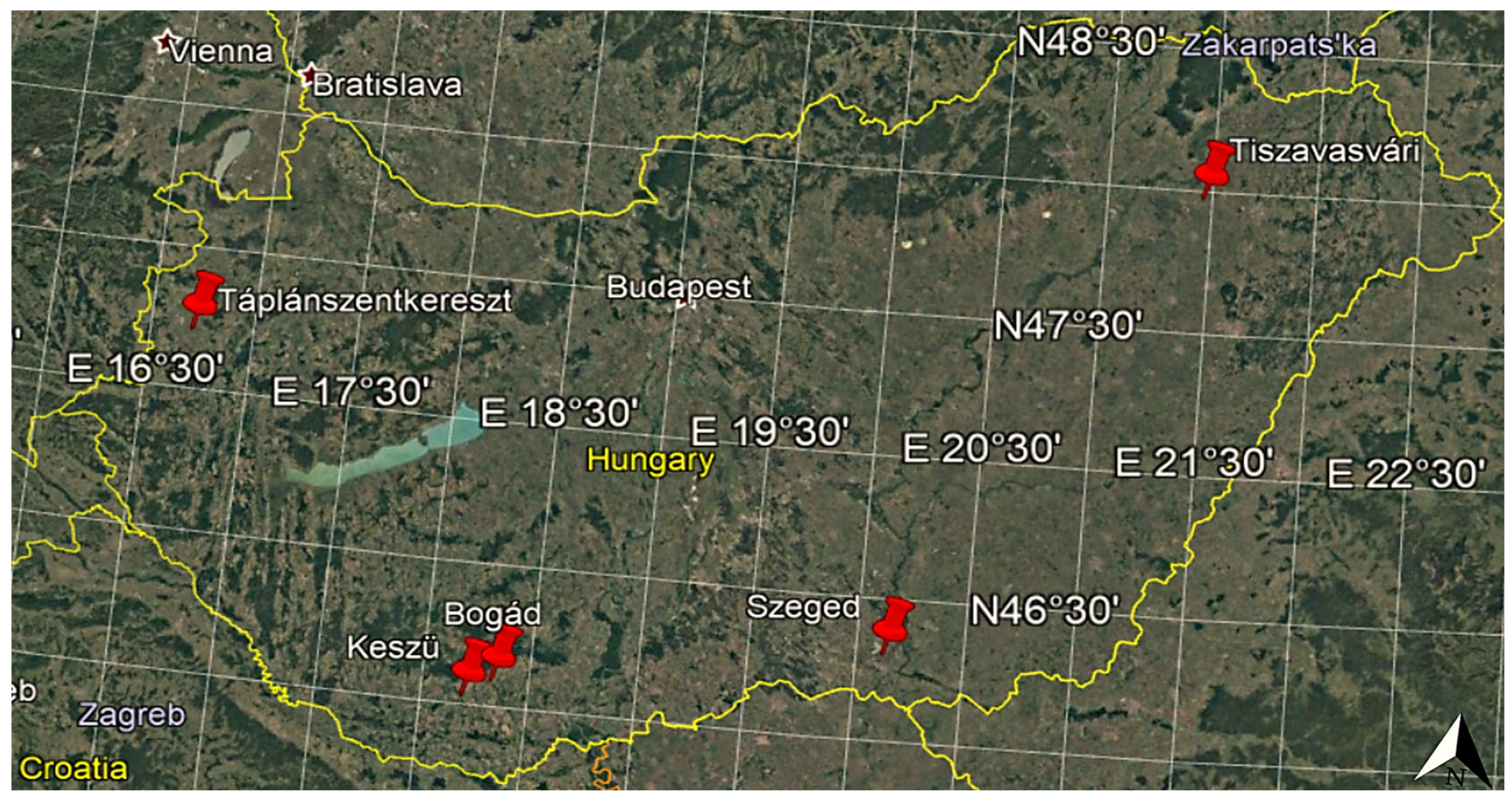
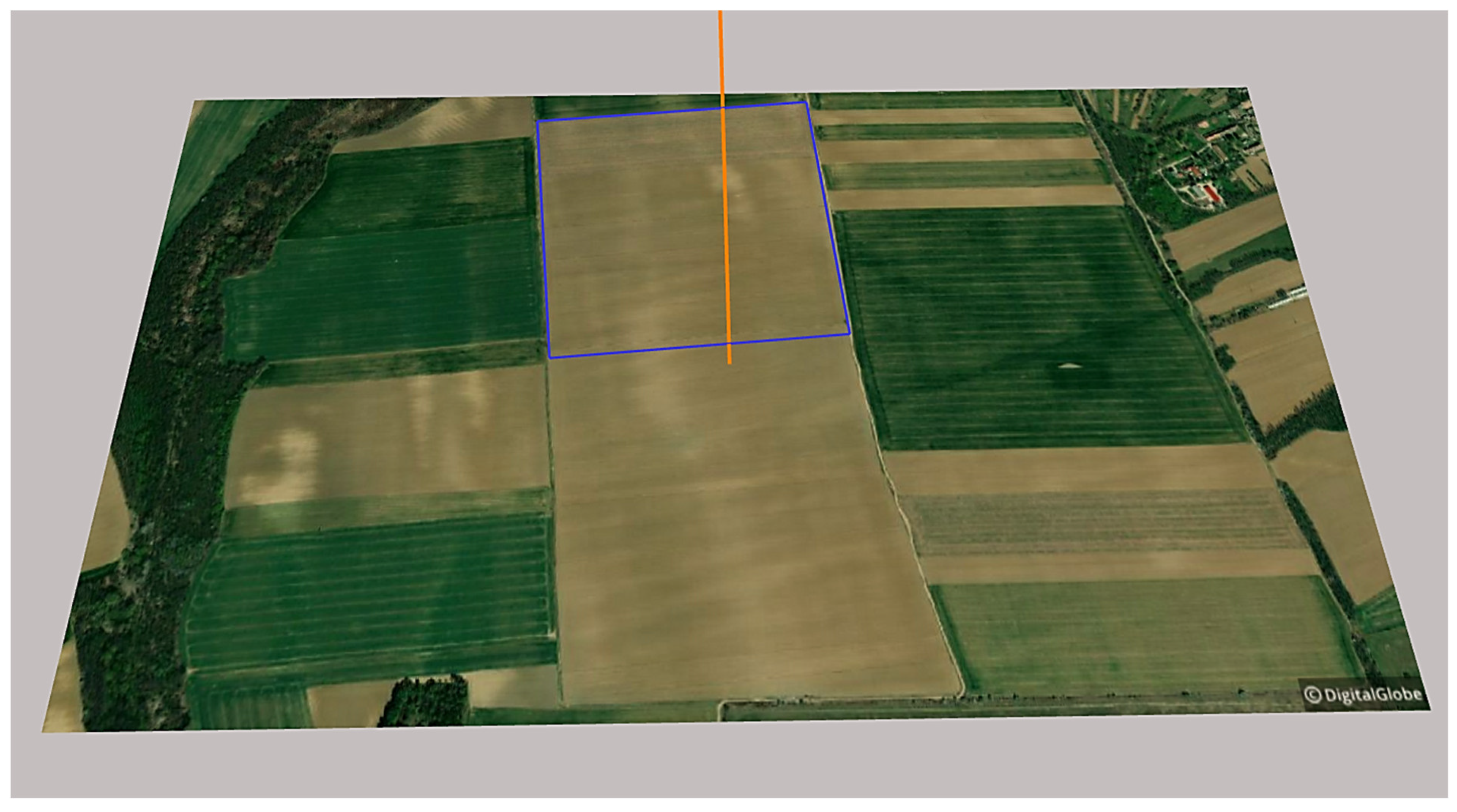
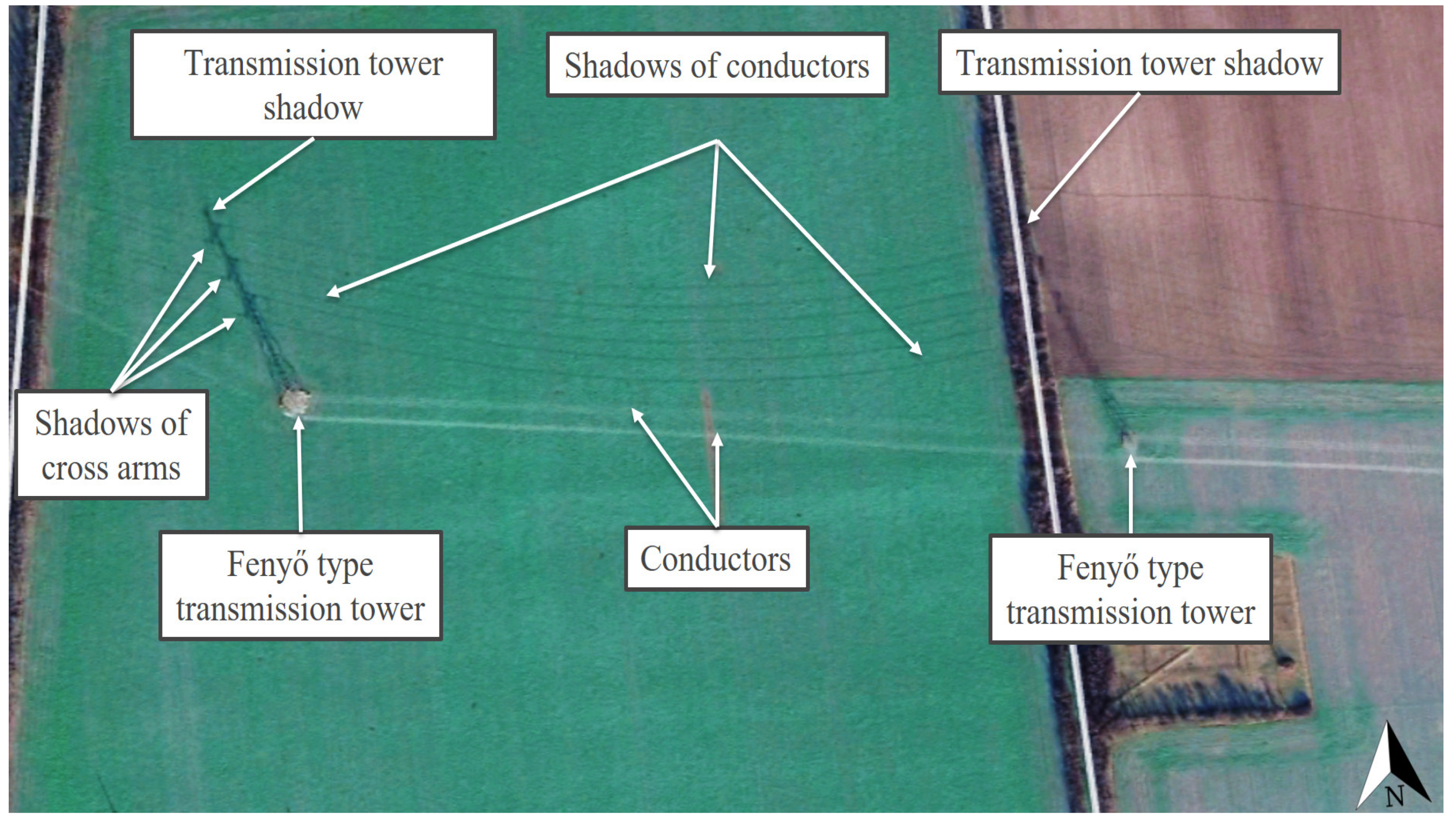
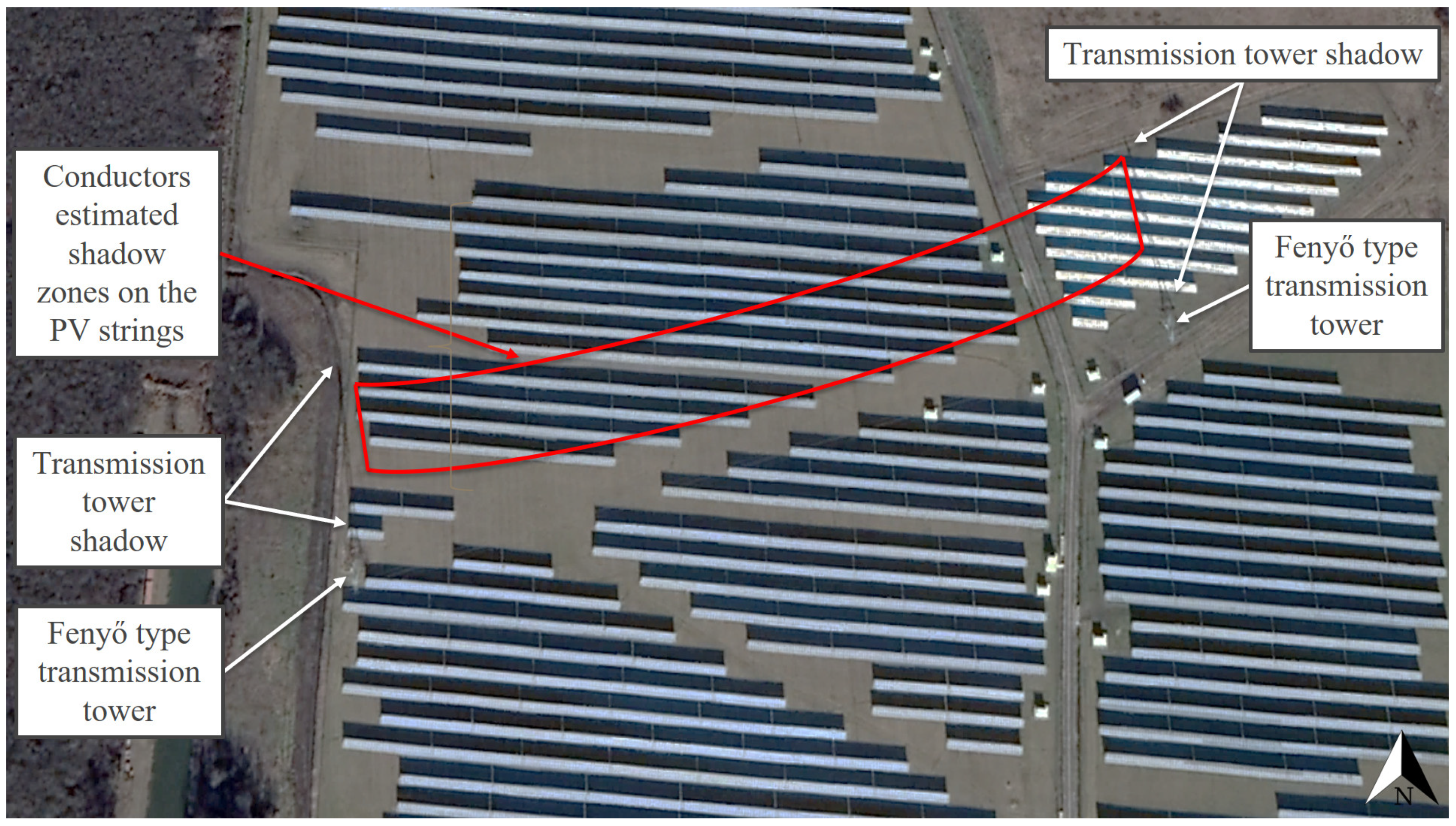

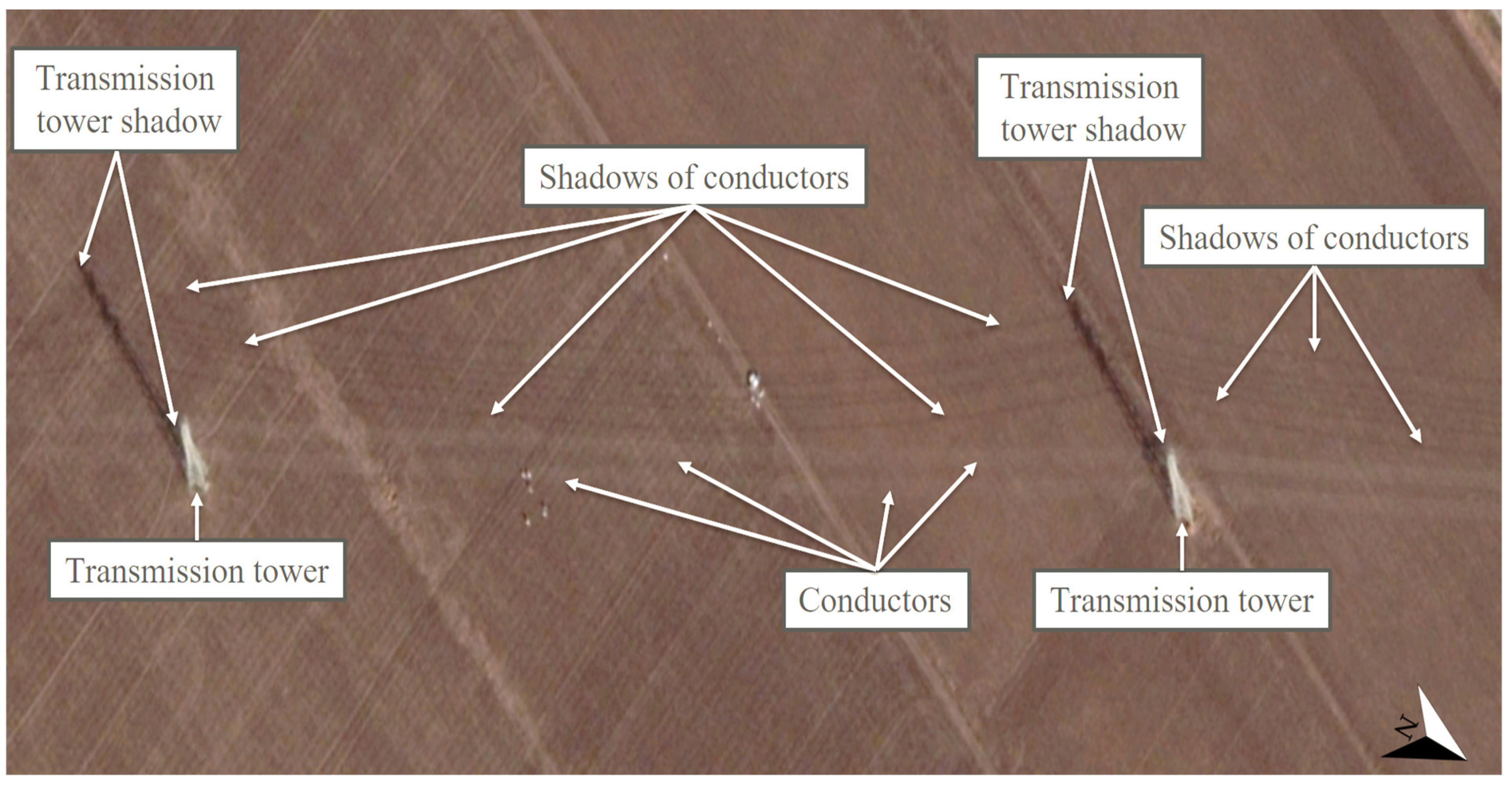
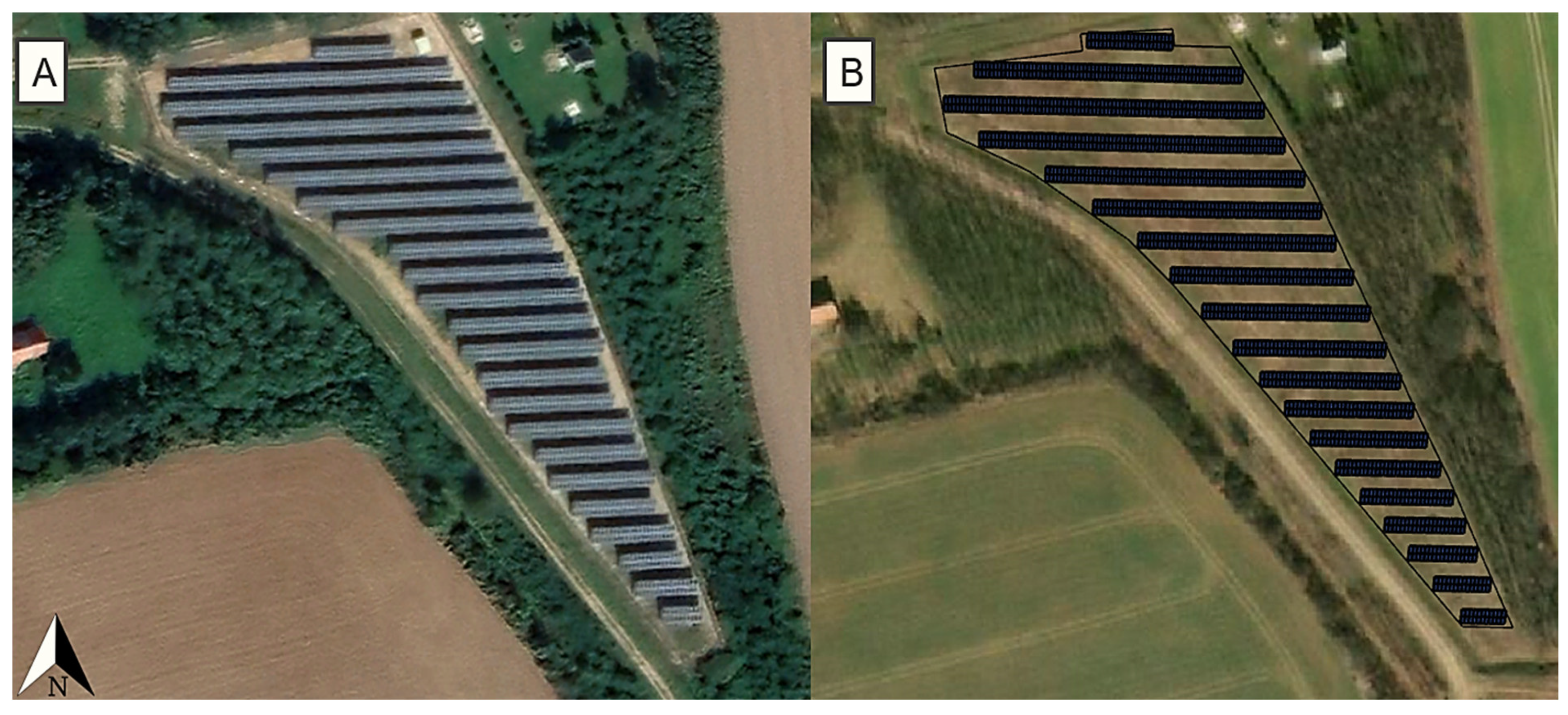

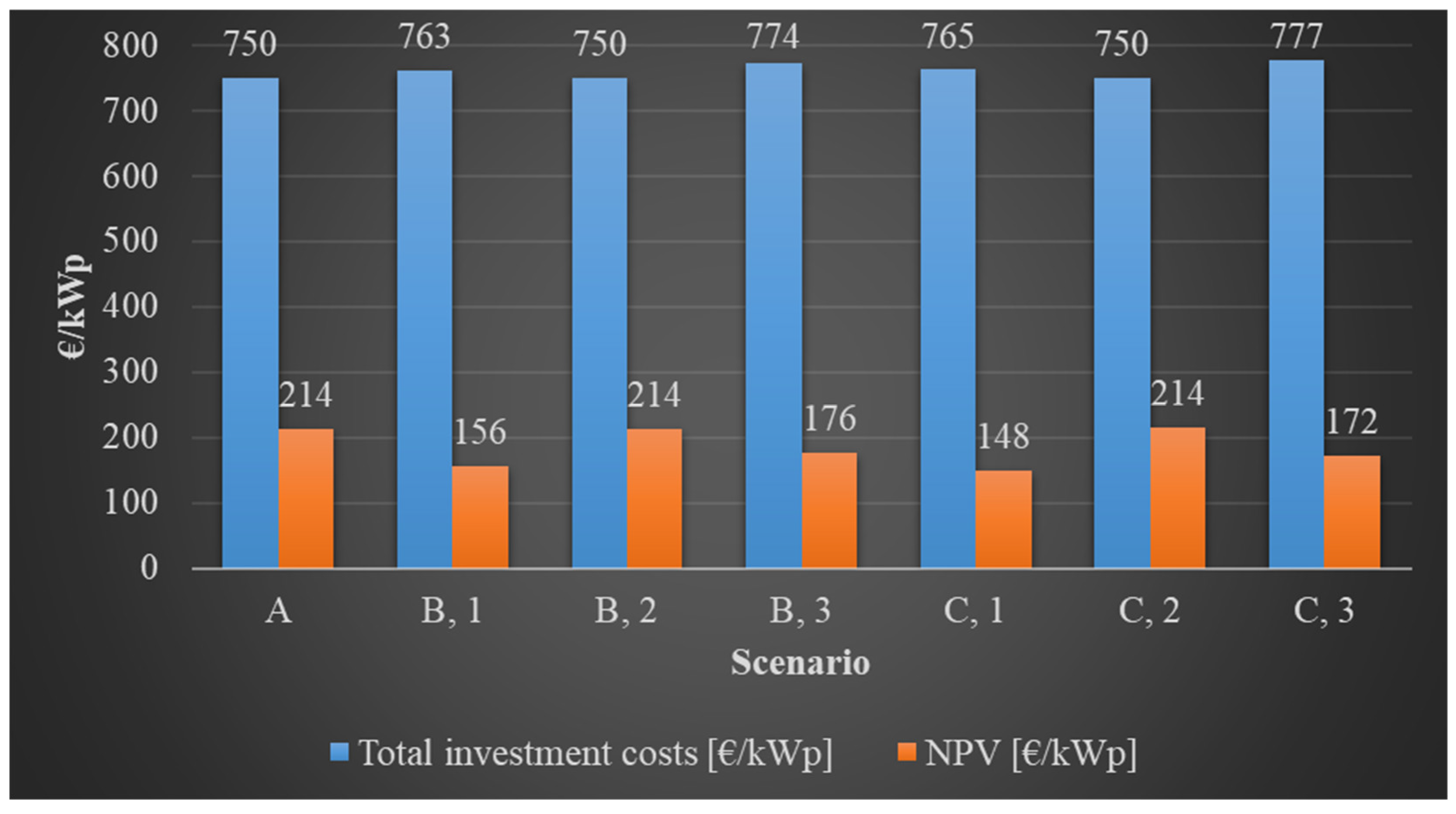
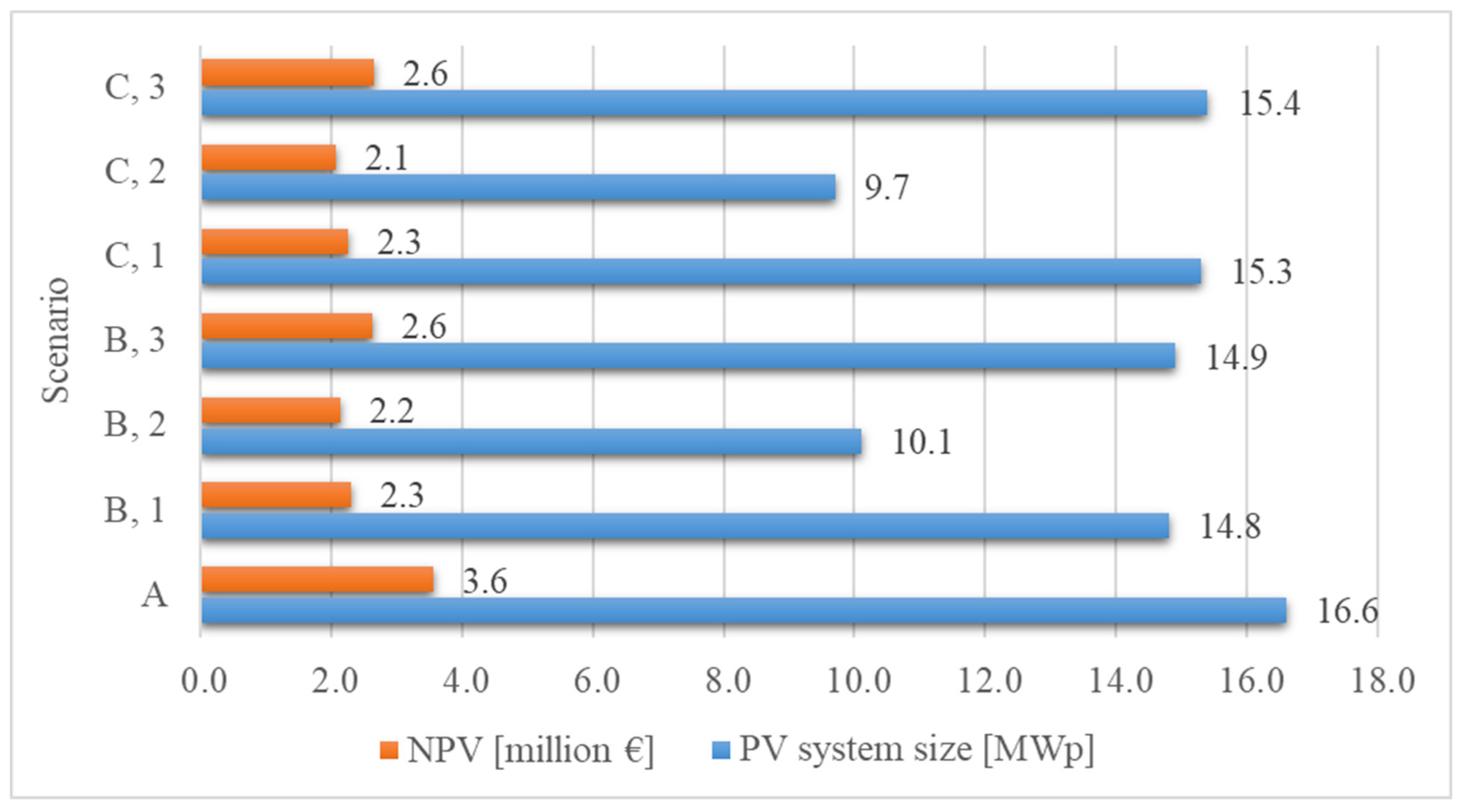
| Description | Values | Ref. | ||||||
|---|---|---|---|---|---|---|---|---|
| Tilt angle of PV modules (°) | 30 | [7,10] | ||||||
| Orientation (azimuth) (°) | 180 | [10,53] | ||||||
| Layout of the PV modules | 3 rows, horizontal | [10] | ||||||
| Decrease in annual performance of traditional crystalline modules after the first year, without shading (%) | 0.5 | [58,59] | ||||||
| Decrease in annual performance of traditional/MX crystalline modules after the first year, in the case of shading (%) | 2.5/0.8 | [20,32,60] | ||||||
| Area of analyzed site (ha) | 22.7 | - | ||||||
| Distance from fence (m) | 5 | [10] | ||||||
| Height of fence (m) | 2 | [37] | ||||||
| Distance from outer conductors of high-voltage line on both sides (m) | 18–18 | [10,61] | ||||||
| Distance between high-voltage transmission towers distance (m) | 325 | [41] | ||||||
| Reference date and time (local time) for PV string spacing | 21 December 2020, 11:47 a.m. | [53] | ||||||
| Reference date and time (local time) for determining shading zones of high-voltage transmission towers and conductors | 21 December 2020, 9:00 a.m.–2:00 p.m. | [37] | ||||||
| Examined scenario | A | B1 | B2 | B3 | C1 | C2 | C3 | - |
| Do high-voltage transmission towers cross the middle of the site? | no | yes, only in an east–west direction | yes, only in a north–south direction | - | ||||
| Can shading be observed on the PV modules during the year? | no | yes, only in shaded area | no | yes, only in shaded area | yes, only in shaded area | no | yes, only in shaded area | - |
| Installing conventional PV modules? | yes, in whole area | yes, in whole area | only in unshaded area | only in unshaded area | yes, in whole area | only inunshadedarea | only in unshaded area | - |
| Installing MX PV modules? | no installation | no installation | no installation | only in shaded area | no installation | no installation | only in shaded area | - |
| PV module failure and resultant replacement? | no | yes, every 3 years, 3% of PV modules in shaded zone | no | no | yes, every 3 years, 3% of PV modules in shaded zone | no | no | - |
| Description | Context | Ref. |
|---|---|---|
| Annual PV system energy output (kWh/a) | First year, all scenarios: the software results of Skelion | Based on [66] |
| Other years, traditional PV modules without shading effects: ; Other years, traditional PV modules with shading effects: Other years, MX PV modules with shading effects: | ||
| Total cash flow (EUR) | + | |
| Net present value (EUR) | Based on [66,76,77] | |
| Internal rate of return (%) | ||
| Discounted payback period (EUR) |
| Description | Values | Ref. |
|---|---|---|
| Instalment and realization of PV power plant without PV modules (EUR/kWp) | 420 | [10,78] |
| Jinko Cheetah JKMS315M-60B PV module price (EUR/pcs) | 104 | [35] |
| JKMS320M-60HB-MX3 PV module price (EUR/pcs) | 129 | [36] |
| Selling price of electric energy in the first year (EUR/kWh) | 0.0595 | [49] |
| Average rate of inflation (2015–2019) (%) | 2.29 | [65] |
| Bond yield (%) | 2.26 | [67] |
| Price of 1 kWp of used crystalline PV module, fourth quarter of 2020 (EUR) | 112.5 | [68] |
| Selling price of mounting systems (EUR) | 25% of the selling price of used PV modules | [70] |
| Price of 1 kWp of used central PV inverter, fourth quarter of 2020 (EUR) | 20 | [69] |
| Financial support (%) | 0 | - |
| Scheduling costs in the first year in the case of 1 MWp system (EUR) | 2640 | [37] |
| Increase in scheduling costs until 2026 (%) | 10 | [75] |
| Operating and maintenance tasks of PV power plant (EUR/MWp) | 3000 | [79] |
| Costs of disassembling PV power plant at the end of the 15th year | 8% of the costs of installation and realization of PV power plant | [79] |
| Description | Values |
|---|---|
| The minimum height of Hungarian high-voltage transmission towers (m) | 20.5 |
| The maximum height of Hungarian high-voltage transmission towers (m) | 53.2 |
| The median height of Hungarian high-voltage transmission towers (m) | 35.4 |
| The average height of Hungarian high-voltage transmission towers (m) | 36.6 |
| The standard deviation of the heights of Hungarian high-voltage transmission towers (m) | 7.8 |
| The coefficient of variation of the heights of Hungarian high-voltage transmission towers (CV) (%) | 21.4 |
| Description | Values | ||||||
|---|---|---|---|---|---|---|---|
| Examined scenario | A | B1 | B2 | B3 | C1 | C2 | C3 |
| Percentage of useful area with conventional PV modules in unshaded zone (%) | 95.7 | 57.3 | 57.3 | 57.3 | 54.2 | 54.2 | 54.2 |
| Percentage of useful area with conventional PV modules in shaded zone (%) | - | 28.4 | - | - | 31.3 | - | - |
| Percentage of useful area with MX PV modules in the shaded zone (%) | - | - | - | 28.4 | - | - | 31.3 |
| Percentage of total useful area with PV modules (%) | 95.7 | 85.7 | 57.3 | 85.7 | 85.5 | 54.2 | 85.5 |
| Percentage of area loss (%) | 4.3 | 14.3 | 42.7 | 14.3 | 14.5 | 45.8 | 14.5 |
| Description | Values | ||||||
|---|---|---|---|---|---|---|---|
| Examined scenario | A | B1 | B2 | B3 | C1 | C2 | C3 |
| Number of conventional PV modules that can be placed in unshaded zone (pcs) | 52,761 | 31,950 | 30,639 | ||||
| Number of conventional PV modules that can be placed in shaded zone (pcs) | - | 15,063 | - | - | 17,838 | - | - |
| Number of MX PV modules that can be placed in shaded zone (pcs) | - | - | - | 15,063 | - | - | 17,838 |
| Nominal power of conventional PV modules that can be placed in unshaded zone (MW) | 16.6 | 10.1 | 9.7 | ||||
| Nominal power of conventional PV modules that can be placed in shaded zone (MW) | - | 4.7 | - | - | 5.6 | - | - |
| Nominal power of MX PV modules that can be placed in shaded zone (MW) | - | - | - | 4.8 | - | - | 5.7 |
| Nominal power of PV power plant that can be built in the whole area (MW) | 16.6 | 14.8 | 10.1 | 14.9 | 15.3 | 9.7 | 15.4 |
| Total annual shading loss of conventional PV modules that can be placed in unshaded zone (%) | 0.05 | ||||||
| Total annual shading loss of conventional PV modules that can be placed in shaded zone (%) | - | 4.21 | 3.76 | ||||
| Total annual shading loss of MX PV modules that can be placed in shaded zone (%) | - | 2.33 | 1.82 | ||||
| The amount of electric energy that can be sold in the first year specifically from conventional PV modules that can be placed in the unshaded zone in the case of a 1 kWp PV system (kWh/kWp) | 1211.6 | ||||||
| The amount of electric energy that can be sold in the first year specifically from conventional PV modules that can be placed in the shaded zone in the case of a 1 kWp PV system (kWh/kWp) | - | 1161.5 | - | - | 1166.94 | - | - |
| The amount of electric energy that can be sold in the first year specifically from MX PV modules that can be placed in the shaded zone in the case of a 1 kWp PV system (kWh/kWp) | - | - | - | 1184.7 | - | - | 1190.3 |
| The amount of electric energy that can be sold in the first year from conventional PV modules that can be placed in the unshaded zone (GWh) | 20.1 | 12.2 | 11.7 | ||||
| The amount of electric energy that can be sold in the first year from conventional PV modules that can be placed in the shaded zone (GWh) | - | 5.5 | - | - | 6.6 | - | - |
| The amount of electric energy that can be sold in the first year from MX PV modules that can be placed in the shaded zone (GWh) | - | - | - | 5.7 | - | - | 6.8 |
| The amount of electric energy that can be sold in the first year from the PV power plant that can be built in the whole area (GWh) | 20.1 | 17.7 | 12.2 | 17.9 | 18.3 | 11.7 | 18.5 |
| Description | Values | ||||||
|---|---|---|---|---|---|---|---|
| Examined scenario | A | B1 | B2 | B3 | C1 | C2 | C3 |
| Studied investment period (years) | 15 | ||||||
| PV system size (MW) | 16.6 | 14.8 | 10.1 | 14.9 | 15.3 | 9.7 | 15.4 |
| Total investment costs, net, fourth quarter of 2020 (million EUR) | 12.5 | 11.3 | 7.6 | 11.5 | 11.7 | 7.2 | 11.9 |
| Negative cash flow (CO&M,total + scheduling fee + disassembling cost, net (million EUR) | 3.3 | 2.9 | 2.0 | 2.9 | 3.0 | 1.9 | 3.1 |
| Positive cash flow, net (million EUR) | 22.7 | 19.4 | 13.8 | 20.1 | 19.9 | 13.2 | 20.8 |
| NPV (million EUR) | 3.6 | 2.3 | 2.2 | 2.6 | 2.3 | 2.1 | 2.6 |
| IRR (%) | 5.46 | 4.62 | 5.46 | 4.86 | 4.51 | 5.46 | 4.79 |
| DPP (year) | 13 | 14 | 13 | 14 | 15 | 13 | 14 |
Publisher’s Note: MDPI stays neutral with regard to jurisdictional claims in published maps and institutional affiliations. |
© 2021 by the authors. Licensee MDPI, Basel, Switzerland. This article is an open access article distributed under the terms and conditions of the Creative Commons Attribution (CC BY) license (https://creativecommons.org/licenses/by/4.0/).
Share and Cite
Zsiborács, H.; Baranyai, N.H.; Vincze, A.; Pintér, G. An Economic Analysis of the Shading Effects of Transmission Lines on Photovoltaic Power Plant Investment Decisions: A Case Study. Sensors 2021, 21, 4973. https://doi.org/10.3390/s21154973
Zsiborács H, Baranyai NH, Vincze A, Pintér G. An Economic Analysis of the Shading Effects of Transmission Lines on Photovoltaic Power Plant Investment Decisions: A Case Study. Sensors. 2021; 21(15):4973. https://doi.org/10.3390/s21154973
Chicago/Turabian StyleZsiborács, Henrik, Nóra Hegedűsné Baranyai, András Vincze, and Gábor Pintér. 2021. "An Economic Analysis of the Shading Effects of Transmission Lines on Photovoltaic Power Plant Investment Decisions: A Case Study" Sensors 21, no. 15: 4973. https://doi.org/10.3390/s21154973
APA StyleZsiborács, H., Baranyai, N. H., Vincze, A., & Pintér, G. (2021). An Economic Analysis of the Shading Effects of Transmission Lines on Photovoltaic Power Plant Investment Decisions: A Case Study. Sensors, 21(15), 4973. https://doi.org/10.3390/s21154973







